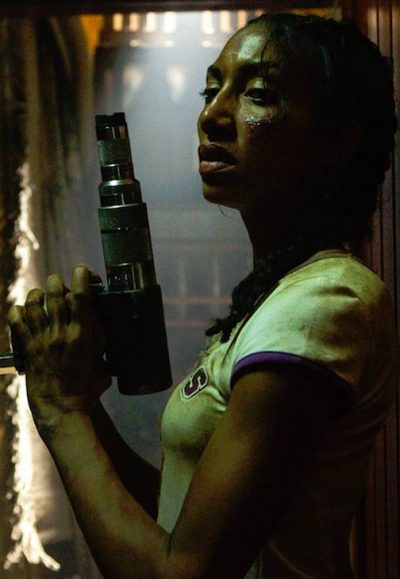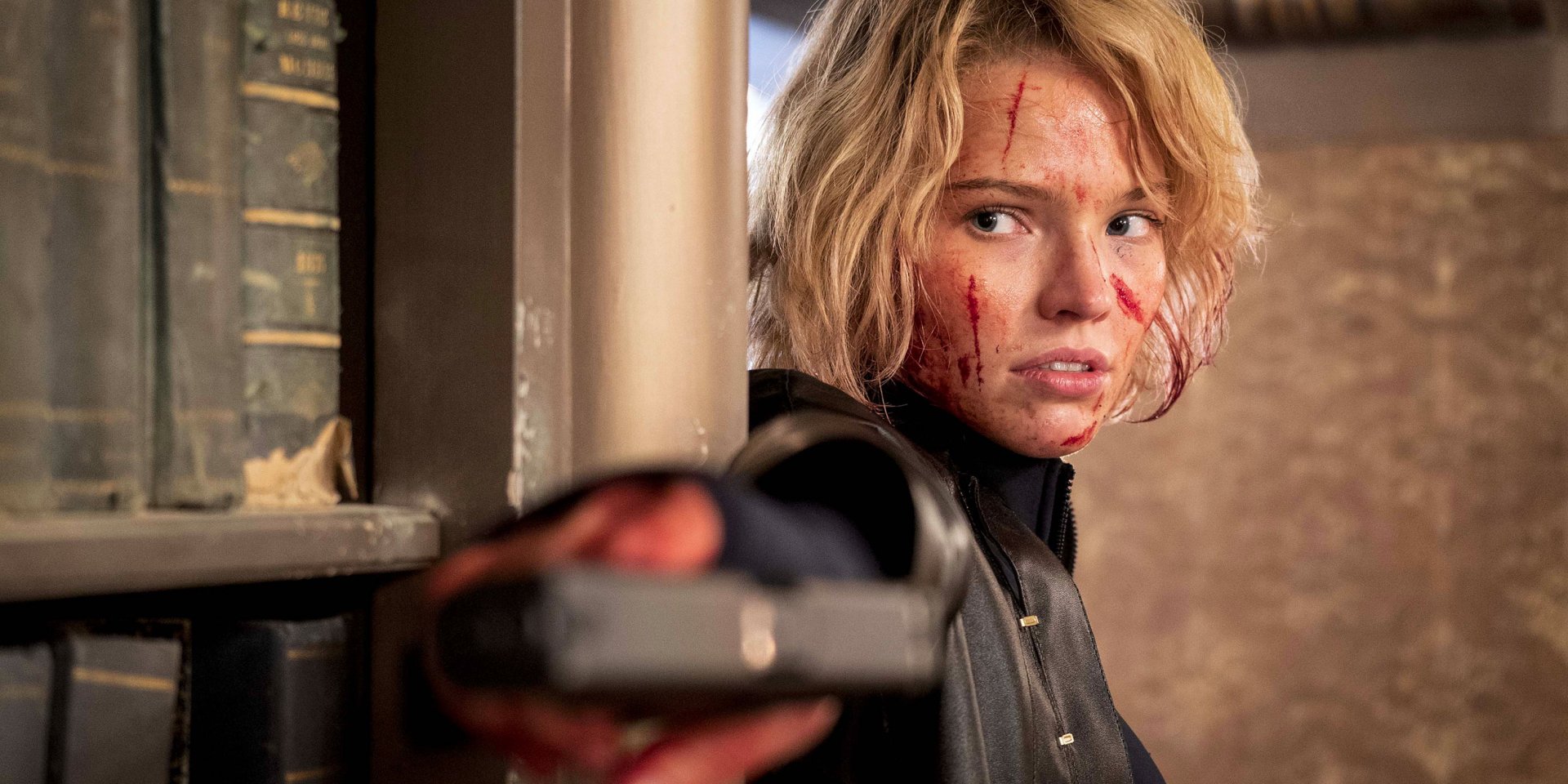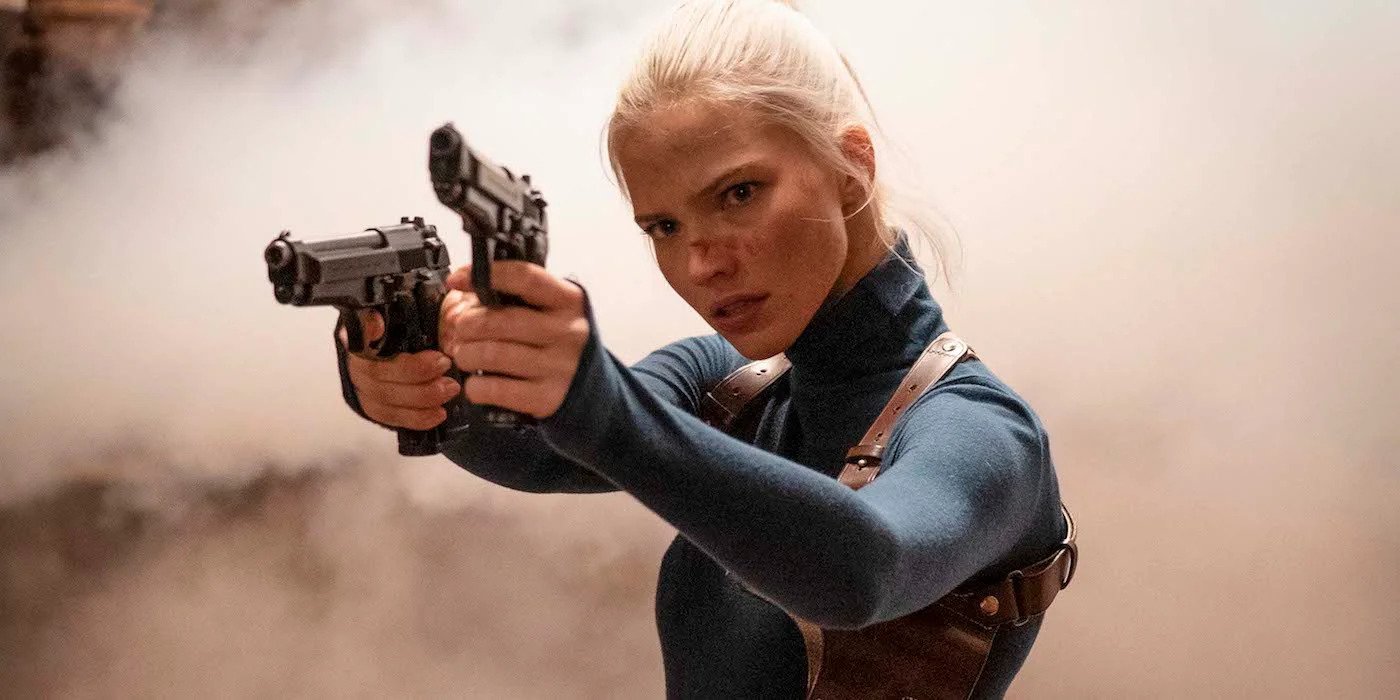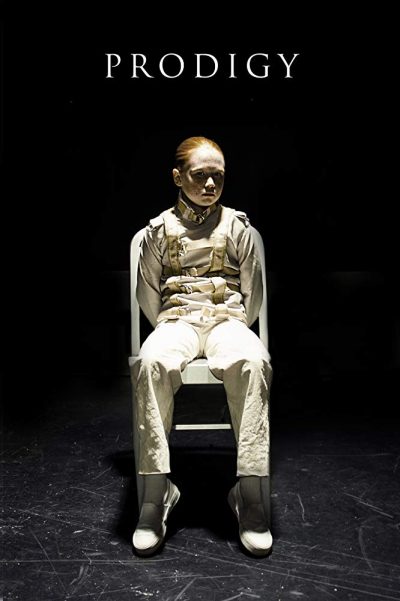★★★★
“The shark was otherwise engaged, torturing Blake Lively…”

 I have to say, I’m neither an expert on that strange sub-genre of “animal horror,” nor am I a particular fan of it. I’m mainly looking for a movie that can give me a suspenseful time in the cinemas. This is becoming more and more difficult. Partly because in by my time of live, I have has seen quite a lot of movies, of all sorts; but also because I feel modern film makers have forgotten how to create real suspense and a feeling of slowly rising and constant terror in movies.
I have to say, I’m neither an expert on that strange sub-genre of “animal horror,” nor am I a particular fan of it. I’m mainly looking for a movie that can give me a suspenseful time in the cinemas. This is becoming more and more difficult. Partly because in by my time of live, I have has seen quite a lot of movies, of all sorts; but also because I feel modern film makers have forgotten how to create real suspense and a feeling of slowly rising and constant terror in movies.
Mostly we are left with nonsensical pictures of man-killing animals that seem to have supernatural abilities. Usually it’s played for laughs because of all the silliness that comes with these kind of movies. That’s a pity. Sure, as a cinema-goer you can’t expect the greatness of classics like Hitchcock’s The Birds (1963) or Spielberg’s Jaws (1975) an ymore. But is it really that difficult? Create a modicum of interest for the main characters; introduce the predator; put the future victims in an isolated spot with the animals; and play with the ambiguity of the question as to whether said territory is safe at the moment – or not! That’s not rocket science, folks!
But for that you have to take the movie and the characters of your story seriously and the timing of every scene is essential: You’ve got to know where you set up your “beats”. How long can you ratchet up suspense before you’ve got to deliver? Where do you put the shocks, without which you can’t do a good horror movie? Do you put in a little bit of humor and to what degree? When is it time to give some relief to the audience, e. g. with character or relationship moments which seem obligatory background for these kind of stories? Whom do you kill? Whom do you have survive? And should you kill off the family dog or not? 😉
Alexandre Aja is a French film-maker who has got to show his talents across very different horror movies. His great High Tension, a psycho-thriller produced by Luc Besson, was followed by a The Hills Have Eyes remake, the good but not great Kiefer Sutherland vehicle Mirrors and later the (consciously) ridiculous Piranha 3-D. After a good start, in recent years it seemed as if he had lost “it” a bit. So, the offer from producer Sam Raimi to film an original story by Michael and Shawn Rasmussen came at the right time.
While the script has a few humorous moments (if you’re looking for them), it plays its story straight and Aja also focuses on creating genuine suspense and danger. Yet he also delivers in the important categories of shock and gore – something not really that evident from the trailers. That makes sense: you won’t show your climaxes in a trailer of an action movie. I’ve to say my expectations were pretty low when going into the movie. As a fan you know the score, so can a film still get you? To my surprise and delight, this was not only able to do that but also surpassed my expectations by far. But let’s start with some background info on what I want in such a movie.
Though you never expect a character study, I’m always happy if the characters get enough backstory or character traits, that they don’t appear as totally bland, two-dimensional audience stand-ins. That’s definitively true for Crawl‘s main actors Kaya Scodelario and Barry Pepper. Neither had that much luck with past roles: Scodelario, I remember from the Maze Runner movies but hardly seemed to register anywhere else much. I think I saw Pepper last with a supporting villain role in the True Grit remake (2010). I also need predators I like and respect. Some animals won’t really work for me, e. g. bears are simply too sympathetic. But for my money reptiles of all sizes always deliver the goods. And I’ve got an enormous respect for crocodiles or alligators.
 Next, the simple but effective story in a nutshell. Florida, hurricane time. Swimmer Haley Keller (Scodelario), who just failed in a swimming competition, receives a phone call from her sister She’s worried because she couldn’t reach their dad. Neither sister has had much contact with him, since their mother and father divorced; he was Haley’s former trainer, leaving their relationship no on the best of terms. The streets are beiing closed due to the dangers of the approaching hurricane and the rising water levels.
Next, the simple but effective story in a nutshell. Florida, hurricane time. Swimmer Haley Keller (Scodelario), who just failed in a swimming competition, receives a phone call from her sister She’s worried because she couldn’t reach their dad. Neither sister has had much contact with him, since their mother and father divorced; he was Haley’s former trainer, leaving their relationship no on the best of terms. The streets are beiing closed due to the dangers of the approaching hurricane and the rising water levels.
After finding her father’s house abandoned, save for his dog, Haley drives on to their former family house which he was renovating. Following the sound of a radio, she descends into the derelict cellar where she finds Dave, her wounded father (Pepper), who tells her that two alligators have entered the cellar through the drain. While they have some sanctuary in the cellar, they have to make an escape, due to the rising water that is coming up through openings in the cellar floor…
This may sound maybe a bit dry (pun not intended). But, believe me, the screenwriters and Aja have used every trick in the book to push and pull us, the audience, emotionally through our seats, in the same way the alligators push and pull the two likable yet imperfect protagonists through their surroundings. I was very pleasantly surprised about the high level of suspense and tension here. But also how the important ingredients mentioned above were perfectly blended together. The movie really creates suspense and grisly anticipation – yet also doesn’t forget that audiences need moments of relaxation so they can breathe a little, before the next furious attack or moment of extreme danger arrive. It’s a very well-written and executed entertainment, showcasing a kind of story-telling we don’t see much any more.
That said, the movie doesn’t reinvent the wheel. I personally wouldn’t be surprised if the Rasmussens saw two other recent animal horror movies with female leads: Burning Bright (2010) told the story of a young woman, locked together with her autistic brother in a house with a wild tiger by her evil uncle during a hurricane. And, of course The Shallows (2016, is it really already that long ago? It feels as if I saw the film just a couple of weeks ago…), which showed us Blake Lively on a rock in the rising water off an unknown beach while a blood-thirsty shark circles. As a matter of fact, both of these movies would make for a good triple-bill with this. And once Crawl comes out on DVD, it will find its place directly next to them on my shelves!
 What is it about all those young women fighting predators with large pointy teeth? I’m no psycho-analyst but I guess it has something to do with the re-integration of certain character traits into the female psyche. Whatever these may be. I do remember an early trailer when The Shallows came out that had a voice-over of what sounded like a life coach trainer, encouraging the Blake Lively character. I wonder if the idea of the father who trained his daughter to extraordinary achievements was inspired by that trailer?
What is it about all those young women fighting predators with large pointy teeth? I’m no psycho-analyst but I guess it has something to do with the re-integration of certain character traits into the female psyche. Whatever these may be. I do remember an early trailer when The Shallows came out that had a voice-over of what sounded like a life coach trainer, encouraging the Blake Lively character. I wonder if the idea of the father who trained his daughter to extraordinary achievements was inspired by that trailer?
Actually, this movie goes a different way from some recent action-heroine movies, that looked to discredit father figures or put them in a negative light. Haley may have felt betrayed by her parents divorce and her father “abandoning” her. Yet during the course of the story, she finds out that her parents were not as happy as she thought and that her dad, who always loved her and believed in her, is just a normal guy. [Though I must credit him for absolutely convincing me how every household needs a utility belt for hand tools!] Having to survive and fight for what is left of her family, with the support of her father makes Haley overcome her own anxieties, through facing more than one deadly situation. Certainly, crawling through the drain by which the reptiles came into the house evokes quite distressing birth trauma… That’s a very positive message. After so many negative portrayals of father figures and “family values”, I found this a highly sympathetic and, for 2019, unusually traditional depiction.
But it only has to work – and it does that very well. We are not immediately tossed into shock-infested seas, there’s a nice build-up, so when the gators appear they evoke the desired audience reaction.Haley and her father have enough back story that you are on their side and want them to survive, while at the same time worrying if they will make it. Despite being just that just 90 minutes, the movie is full of ideas of how the imprisoned father-daughter couple could get help from outside (which leads to an unpleasant looter-reptile encounter) or escape the cellar and the house. It really plays with giving you hope, just to take it away again. One of my favourite moments is when Haley and Dave make it to an escape boat outside, when the levees break and a wave of water throws them back into their house – only one floor higher. Well-timed elements of humor, such as Haley’s reaction when normal house spiders fall on her face, help make for very satisfying entertainment.
A fascinating side-fact is that the movie was shot in Belgrade, Serbia, which doubles for Florida perfectly. And a little “tidbit”: Scodelario’s and Pepper’s family name in the movie is “Keller”. For German cinema-goers that’s extremely funny as “Keller” is the German word for “cellar”. But one last question: will the dog survive? Watch the movie to find out! It gets four well-earned stars from me. Your mileage may vary, but honestly I think it’s on the same level as The Shallows, which also scored highly with me. So, if you enjoyed that, this should be right up your (flooded) street.
Dir: Alexandre Aja
Star: Kaya Scodelario, Barry Pepper






 Before getting to the film, we probably have to address the elephant in the room: the rape accusations against Luc Besson. Though police investigations have finished, with the allegations unproven, they definitely have damaged Besson’s reputation. While in Europe, the basic rule remains “Innocent until proven guilty”, in Hollywood a mere accusation in a newspaper headline or online can potentially destroy a man’s career these days. And while some people are guilty of the crimes of which they were accused, I personally strongly doubt that the small, overweight, apparently introverted Frenchman is a serial rapist.
Before getting to the film, we probably have to address the elephant in the room: the rape accusations against Luc Besson. Though police investigations have finished, with the allegations unproven, they definitely have damaged Besson’s reputation. While in Europe, the basic rule remains “Innocent until proven guilty”, in Hollywood a mere accusation in a newspaper headline or online can potentially destroy a man’s career these days. And while some people are guilty of the crimes of which they were accused, I personally strongly doubt that the small, overweight, apparently introverted Frenchman is a serial rapist.
 Do I sound too enthusiastic? I don’t think so. Besson is an excellent director. This doesn’t exclude him from creating flawed movies or average scripts; yet even his failures are – at least for me – still more satisfying and interesting than an average “successful” conveyor-belt Hollywood movie. He is an almost classic storyteller, telling his very own stories, depending on what he focuses his current interest on in the moment. One quality I think I haven’t seen mentioned anywhere, is his ability to lead actors. All of the performances here, including Evans, Murphy and Mirren are very good. But the one that really impressed me is supermodel-turned-actress Sasha Luss, who previously played a smaller role as an alien in Valerian.
Do I sound too enthusiastic? I don’t think so. Besson is an excellent director. This doesn’t exclude him from creating flawed movies or average scripts; yet even his failures are – at least for me – still more satisfying and interesting than an average “successful” conveyor-belt Hollywood movie. He is an almost classic storyteller, telling his very own stories, depending on what he focuses his current interest on in the moment. One quality I think I haven’t seen mentioned anywhere, is his ability to lead actors. All of the performances here, including Evans, Murphy and Mirren are very good. But the one that really impressed me is supermodel-turned-actress Sasha Luss, who previously played a smaller role as an alien in Valerian. In one scene, a not unsympathetic, shy Russian who is an illegal arms trader confesses his love for her; she kills him in the moment she has the relevant information. Then there is that scene in a restaurant, which makes the similar scene in Nikita look like a Disney movie in comparison. Anna leaves a room full of bloody corpses behind her; the word “overkill” sprang immediately into my mind! A normal “relationship” with her girlfriend seems possible; but Anna hardly seems to care for her, since said friend is mainly a cover. At the same time she has passionate sex with Evans and Murphy, and calls them her family. But is this just another deception? You never know if she cares for anyone at all, or if she is just manipulating everyone around her emotionally and sexually, for use later in her intricate plan.
In one scene, a not unsympathetic, shy Russian who is an illegal arms trader confesses his love for her; she kills him in the moment she has the relevant information. Then there is that scene in a restaurant, which makes the similar scene in Nikita look like a Disney movie in comparison. Anna leaves a room full of bloody corpses behind her; the word “overkill” sprang immediately into my mind! A normal “relationship” with her girlfriend seems possible; but Anna hardly seems to care for her, since said friend is mainly a cover. At the same time she has passionate sex with Evans and Murphy, and calls them her family. But is this just another deception? You never know if she cares for anyone at all, or if she is just manipulating everyone around her emotionally and sexually, for use later in her intricate plan.
 There were aspects which still befuddle me, such as most of the plot. Why, exactly, is Angela Mao pretending to be a boy? It’s completely unconvincing, and entirely unnecessary to the story-line. No-one ever discovers her true gender: it’s almost as if this were originally written for a man, then they got Mao, and in all the excitement, forgot (or, alternatively and equally credibly, couldn’t be bothered) to change the script. The rest of it is an odd mix. It’s partly vengeance with Fei Fei (Mao) out to pick up enough martial arts skill to take revenge on those who killed her family. Yet this sits alongside slapstick comedy which you’d not expect given the title, such as the two kung fu masters – one drunk, one stoner – whom she tricks into sharing her talents, or the villain with the world’s tiniest fan whom she defeats on her way to the big bad.
There were aspects which still befuddle me, such as most of the plot. Why, exactly, is Angela Mao pretending to be a boy? It’s completely unconvincing, and entirely unnecessary to the story-line. No-one ever discovers her true gender: it’s almost as if this were originally written for a man, then they got Mao, and in all the excitement, forgot (or, alternatively and equally credibly, couldn’t be bothered) to change the script. The rest of it is an odd mix. It’s partly vengeance with Fei Fei (Mao) out to pick up enough martial arts skill to take revenge on those who killed her family. Yet this sits alongside slapstick comedy which you’d not expect given the title, such as the two kung fu masters – one drunk, one stoner – whom she tricks into sharing her talents, or the villain with the world’s tiniest fan whom she defeats on her way to the big bad.
 ★★★★
★★★★ That’s a shame, because this is a solid, well-made piece of science-fiction, which does a particularly good job of creating a massive, epic world on the cinema screen. Rodriguez has been squeezing every penny out of his budgets since El Mariachi, and while there may not be much apparent overlap between Alita with Shark Boy and Lava Girl, the latter franchise was excellent training for RR in meshing computer graphics with actors. Sin City also laid similar groundwork, and helped set up the director with the chance to go big or go home. And there’s no doubt: Rodriguez went big. This was my first cinema trip of 2019, and was fully justified.
That’s a shame, because this is a solid, well-made piece of science-fiction, which does a particularly good job of creating a massive, epic world on the cinema screen. Rodriguez has been squeezing every penny out of his budgets since El Mariachi, and while there may not be much apparent overlap between Alita with Shark Boy and Lava Girl, the latter franchise was excellent training for RR in meshing computer graphics with actors. Sin City also laid similar groundwork, and helped set up the director with the chance to go big or go home. And there’s no doubt: Rodriguez went big. This was my first cinema trip of 2019, and was fully justified. And speaking of the end, one frequently-heard bit of criticism is that the ending is too “open,” apparently fishing for a sequel. I can’t say I felt that way at all. There’s certainly scope for more movies, apparently involving Alita going after the mysterious Nova. Yet the main thread of the film, involving Alita and Hugo, is definitively wrapped up. In comparison, say, to Marvel films, which almost inevitably have an in- or post-credit sequence blatantly signposting the next film, this felt conclusive. While there is perhaps need for a greater sense of escalation, or a bigger climax (that Motorball battle is trivial in its consequences), I’m largely baffled by complaints about the “lack of a genuine ending.”
And speaking of the end, one frequently-heard bit of criticism is that the ending is too “open,” apparently fishing for a sequel. I can’t say I felt that way at all. There’s certainly scope for more movies, apparently involving Alita going after the mysterious Nova. Yet the main thread of the film, involving Alita and Hugo, is definitively wrapped up. In comparison, say, to Marvel films, which almost inevitably have an in- or post-credit sequence blatantly signposting the next film, this felt conclusive. While there is perhaps need for a greater sense of escalation, or a bigger climax (that Motorball battle is trivial in its consequences), I’m largely baffled by complaints about the “lack of a genuine ending.”
 This small-scale production – a cast of little more than half a dozen, and one location, not counting the park scenes which bookend it – packs a wallop significantly above its weight. Psychiatrist Jimmy Fonda (Neil) is brought into a military facility by an old friend, Olivia (Andersen), to interview a young girl, Ellie (Liles), who is being held there. To avoid pre-judging her case, Fonda deliberately avoids reading the documentation about her with which he has been provided. But the stringent security precautions (“In the event the subject escapes the restraints, drop to the floor and cover your head”) under which she’s held, should give him a clue that this is far from a normal nine-year-old. If it didn’t, the conversation with her which follows certainly does.
This small-scale production – a cast of little more than half a dozen, and one location, not counting the park scenes which bookend it – packs a wallop significantly above its weight. Psychiatrist Jimmy Fonda (Neil) is brought into a military facility by an old friend, Olivia (Andersen), to interview a young girl, Ellie (Liles), who is being held there. To avoid pre-judging her case, Fonda deliberately avoids reading the documentation about her with which he has been provided. But the stringent security precautions (“In the event the subject escapes the restraints, drop to the floor and cover your head”) under which she’s held, should give him a clue that this is far from a normal nine-year-old. If it didn’t, the conversation with her which follows certainly does. Up to a certain point (which I’ll get to in a bit), this low-budget post-apocalypse picture from the Netherlands has been solid if unspectacular. The limited resources have shown themselves in a world which almost entirely consists of running about sand dunes and light forest. The fight scenes have been grubbily realistic rather than impressive, with the kind of amateur flailing around with limited weaponry you’d probably actually see after armageddon has actually taken place. And the main focus of the plot has been the usual warlord type, Deacon (Bolt) who turns people into “supplicants” – drug-crazed pit-fighters for his personal amusement. Standard practice for a post-apocalyptic leader, really.
Up to a certain point (which I’ll get to in a bit), this low-budget post-apocalypse picture from the Netherlands has been solid if unspectacular. The limited resources have shown themselves in a world which almost entirely consists of running about sand dunes and light forest. The fight scenes have been grubbily realistic rather than impressive, with the kind of amateur flailing around with limited weaponry you’d probably actually see after armageddon has actually taken place. And the main focus of the plot has been the usual warlord type, Deacon (Bolt) who turns people into “supplicants” – drug-crazed pit-fighters for his personal amusement. Standard practice for a post-apocalyptic leader, really.